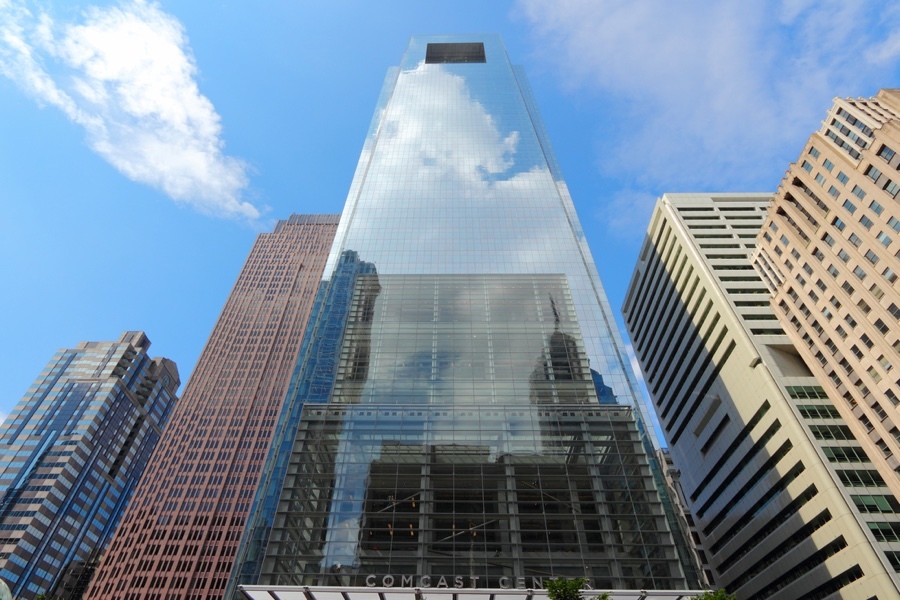Posted on May 18, 2023
For 800,000 years, atmospheric carbon dioxide levels never exceeded 300 parts per million (ppm). Until 70 years ago, that is. Today, CO2 levels are 420 ppm. These higher levels of carbon dioxide warm the atmosphere, increasing sea levels. They have increased eight inches in the past century, with the rate of increase doubling in the last 20 years.
A warming atmosphere also intensifies storms. As MIT’s Concrete Sustainability Hub (CSHub) notes, “Infrastructure damage caused by natural hazards in the U.S. exceeds $50 billion annually, with losses from earthquakes, hurricanes, and fire averaging around $6 billion, $28 billion, and $15 billion, respectively. And, moreover, these costs are trending upward.”
Every year, the National Oceanic and Atmospheric Administration (NOAA) publishes its comprehensive tornado report. From 1991-2010, there were an average of 1,225 tornadoes per year. In early 2023 alone, tornado outbreaks claimed dozens of lives. The swirling violence of tornados exposes the weakness of less resilient construction. Every year, thousands of structures get damaged or destroyed. .
2023 IPCC Report on Climate Change
The Intergovernmental Panel on Climate Change (IPCC) finalized a report on climate change following its session in Interlaken, Switzerland, in March 2023. It is titled, AR6 Synthesis Report: Climate Change 2023.
The reports summarizes the findings of 200+ scientists in each of three key areas:
Physical science of climate change
Impact of climate change
Mitigation of climate change
AR6 highlights 10 important ways to mitigate climate change. One is the “decarbonization of cement, steel, and plastics.” It calls for “deploying CCS in hard-to-abate sectors like cement …”
The report also highlights the need for low- and no-carbon cement production. Achieving this will require years of intensive innovation. The report’s authors are also realistic. They call for increasing investment in existing tech to meet near-term benchmarks.
The report also cites the need for a more circular economy. The Ellen MacArthur Foundation estimates that achieving a true circular economy in cement, steel, aluminum, plastics, and food could cut CO2 emissions by 5.7 million tons by 2050. According to the EPA, carbon dioxide represents 79.4% of GHG emissions in the United States.
Governmental policies, including more stringent building codes, also mitigate climate change. The report calls for incentivizing green buildings, ideally, zero-carbon structures.
Resiliency Research at MIT’s CSHub
Insulated concrete form (ICF) construction is far more resilient than leading alternatives. ICF walls resist hurricanes, tornadoes, straight-line winds, floods, and drought-induced fires. As CSHub says, “The risk of hazards like natural disasters and extreme heat is underestimated. Stronger construction to mitigate it is undervalued.”
Less resilient structures drive up lifetime maintenance costs. particularly in hazard-prone areas. MIT researchers assert that the “costs of hazard-related repairs can exceed the initial building cost.” In response, they advise investing in “more hazard-resistant residential construction.”
ICF walls resist winds of 200 mph, outperforming both steel-framed and wood-framed walls. Testing under the auspices of the National Wind Institute established that ICF walls can stop 100 mph projectiles.
Stronger, Less Voluminous Concrete
More structural resilience and lower carbon emissions is the ideal combination. The solution? Concrete mixes that are at once stronger, lighter, and less voluminous.
High-performing concrete mixes
High-strength mixes cut emissions by reducing the volume of concrete required for code compliance. Consider ultra-high performance concrete (UHPC), for example. It has up to 10 times the compressive strength of traditional concrete, and 2-3 times the tensile strength. Graphene concrete is a newer innovation. It simultaneously delivers improved compressive strength, flexural strength, and split tensile strength.
Lighter rebar
Lighter, more environmentally-friendly reinforcement also helps. For example, glass fiber-reinforced polymer (GFRP) is 2-4 times stronger and 4-7 times lighter than steel. Architect Magazine says that continuous basalt fiber (CBF) has 2.5 times the strength-to-weight ratio of alloyed steel and 1.5 times that of GFRP.
Examples of Concrete’s Resilience
Resilient ICF construction garners attention as atmospheric anomalies lead to higher winds, flooding and rising sea levels. For example, while wood-framed buildings are typically no match for EF5 tornadoes, ICF structures are.
Wind and water
ICFs also deliver superior resistance to extreme winds and storm surges. As Fox Blocks reports, “There are dozens of eye witness examples of ICF homes taking EF5 tornadoes head on with the walls still standing.”
ICF homes have long survived the extreme winds of major hurricanes. For example, Hurricane Katrina damaged or destroyed more than 800,000 homes. However, in one subdivision alone, 30 ICF homes were left standing. When Hurricane Michael struck Florida’s panhandle, the survival of the ICF seaside home known as the “Sand Palace” attracted attention nationwide. The juxtaposition of this ICF home with a nearby concrete slab stripped bare was a graphic reminder of ICF resilience.
Wildfires
Five of California’s ten most destructive wildfires have occurred since 2017. The 2018 Camp Fire was the worst. A faulty transmission line ignited a parched landscape. High winds drove the inferno westward, consuming 18,804 structures around Paradise, CA.. Eighty-five individuals lost their lives. Insured losses exceeded $8 billion. One newer home that survived was built with Logix ICFs.
Due to their fireproof core, ICF walls are very flame-resistant. The outer layers of EPS foam insulation get treated with a fire retardant. When exposed to extreme heat, EPS does not ignite or burn – it melts. ASTM E84 measures how far and fast flames spread across the surface of a given material. The flame spread index (FSI) is on a scale of zero to 200. All ICF components are Class A, with an FSI of 0-25. Compare this to Class C untreated wood frame structures with an FSI of 76 and up.
About PACA
The Pennsylvania Aggregates and Concrete Association (PACA) reports on industry innovation through its SpecifyConcrete.org website. Our team welcomes any questions you may have about your next concrete project. Please contact us at your convenience.

